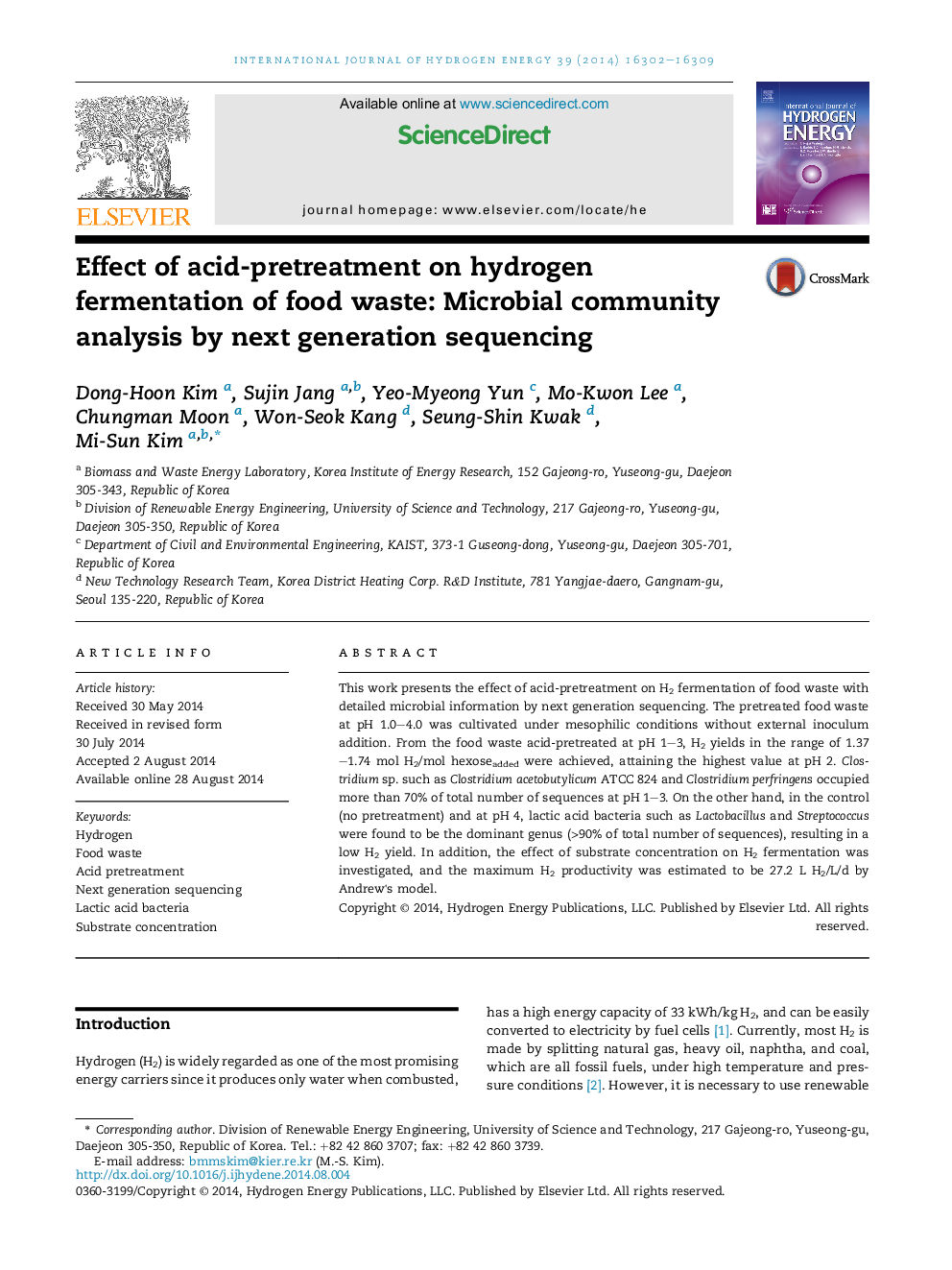| Article ID | Journal | Published Year | Pages | File Type |
|---|---|---|---|---|
| 1280968 | International Journal of Hydrogen Energy | 2014 | 8 Pages |
•Increased H2 production from food waste by acid-pretreatment.•Microbial analysis by using next generation sequencing.•Successful H2 fermentation at pH 1–3 (1.37–1.74 mol H2/mol hexoseadded).•Clostridium sp. occupied more than 70% of total number of sequences at pH 1–3.•LAB were dominant in the control and at pH 4 (>90% of total number of sequences).
This work presents the effect of acid-pretreatment on H2 fermentation of food waste with detailed microbial information by next generation sequencing. The pretreated food waste at pH 1.0–4.0 was cultivated under mesophilic conditions without external inoculum addition. From the food waste acid-pretreated at pH 1–3, H2 yields in the range of 1.37–1.74 mol H2/mol hexoseadded were achieved, attaining the highest value at pH 2. Clostridium sp. such as Clostridium acetobutylicum ATCC 824 and Clostridium perfringens occupied more than 70% of total number of sequences at pH 1–3. On the other hand, in the control (no pretreatment) and at pH 4, lactic acid bacteria such as Lactobacillus and Streptococcus were found to be the dominant genus (>90% of total number of sequences), resulting in a low H2 yield. In addition, the effect of substrate concentration on H2 fermentation was investigated, and the maximum H2 productivity was estimated to be 27.2 L H2/L/d by Andrew's model.
Graphical abstractFigure optionsDownload full-size imageDownload as PowerPoint slide
